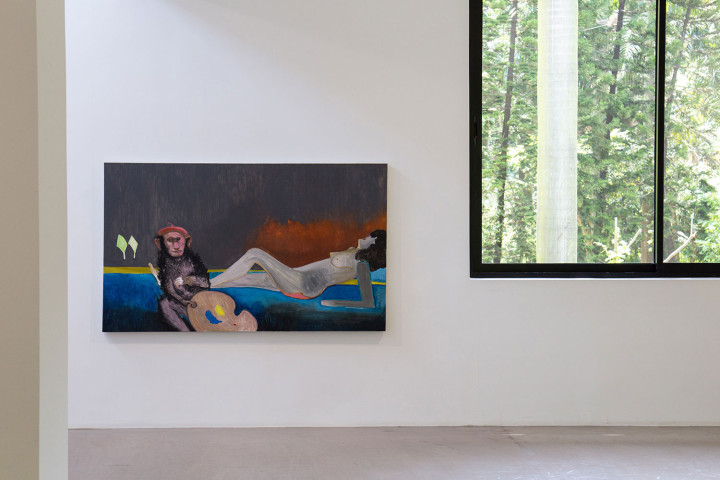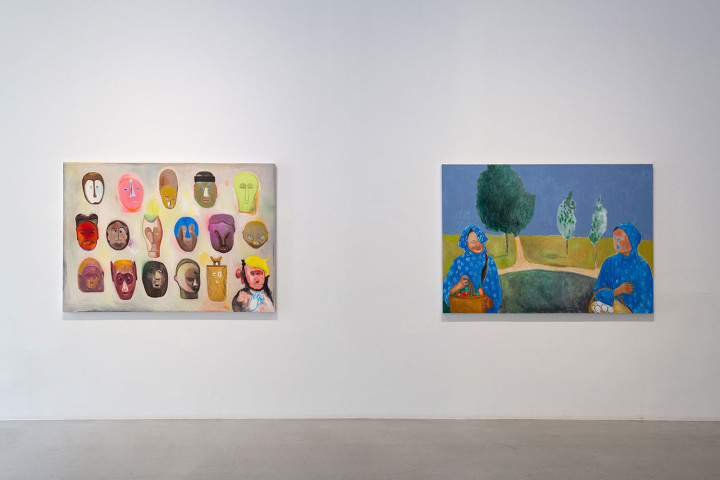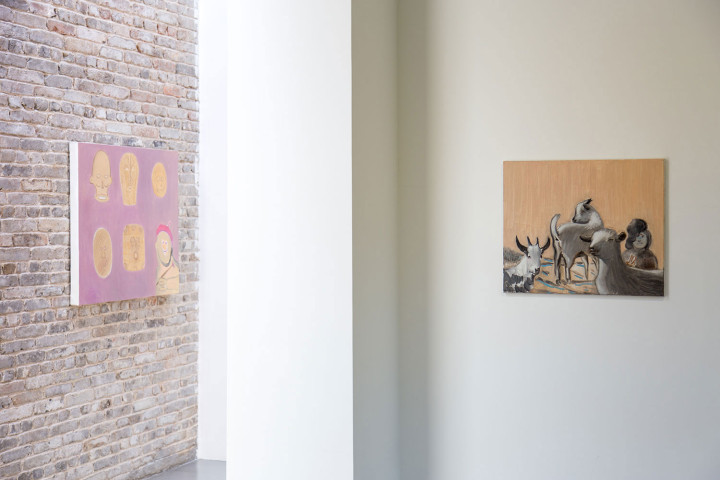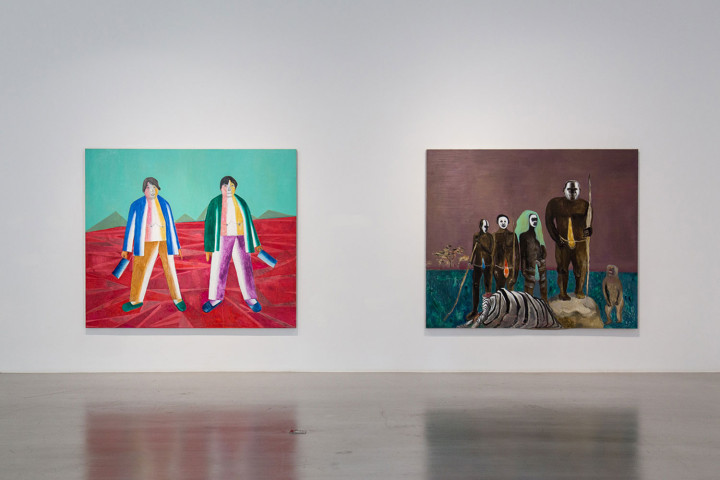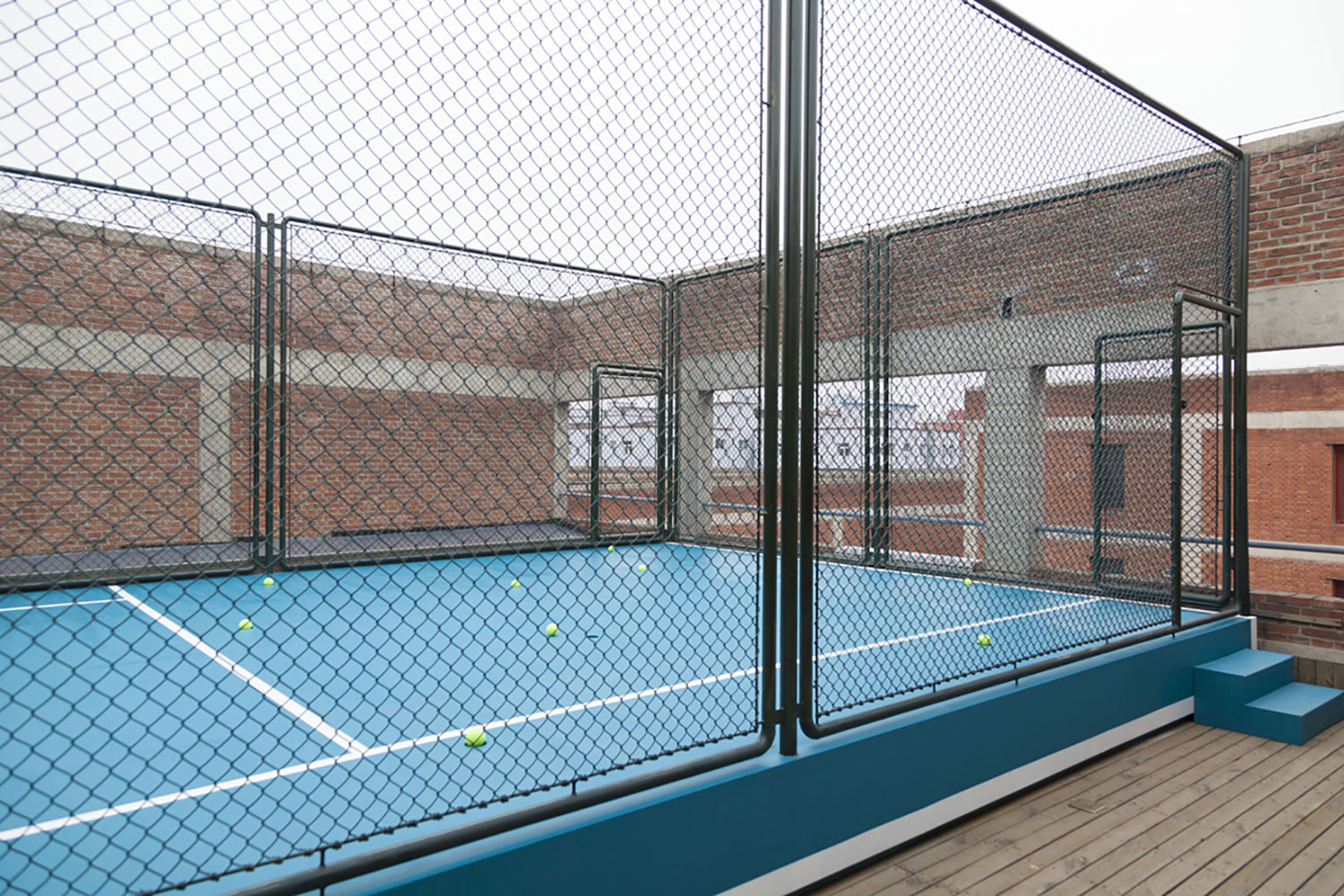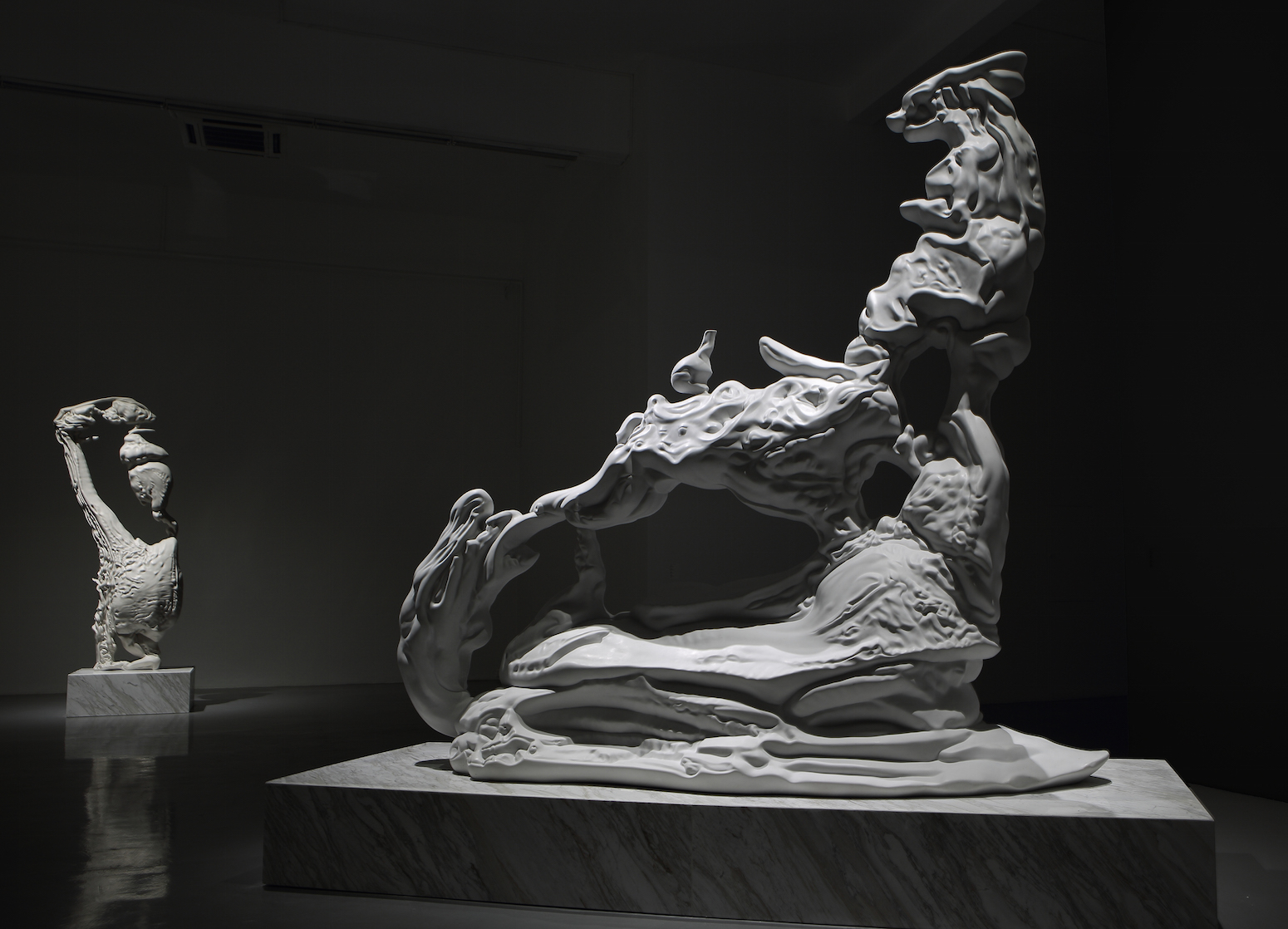“Shamate” (Sharp, Sharp, Smart), the subcultural movement that has been disseminated, popularized and consumed in China via the Internet, does not make an appearance in Duan Jianyu’s new series of paintings titled “shāmătè.”
Instead of rural youths living in suburban fringe zones with incongruously flashy hairstyles, many of the subjects depicted in these paintings are the same ones Duan has portrayed repeatedly over the years, like farmers living and working in fields. Some subjects are seen for the first time, like African people in tribal scenes. Juxtaposed among these are images of “the painter” — references to Duan’s professional identity — as well as paintings depicting traditional Chinese handwoven bamboo baskets and natural scenery. Although almost all the paintings on view belong to the same series, the connections between them are far different from her previous serial groupings that found structure in monotonous narrative frameworks. In the early series “Sister,” followed by “The Muse,” the meanings of these figurative paintings followed aesthetic clues intended to emphasize narrative values. Perhaps because of this, Duan has now reconsidered the practical logics of her serial paintings, seemingly reducing their internal narrative function while reconfiguring the conceptual mechanisms of her own painterly vocabulary.
Thus, the absent “shāmătè” imagery haunts every painting in the show like a ghost — the hybridity and incongruity demonstrated in the everyday aesthetic life of the masses provides an intuitive contradictory unity that mixes “rustic taste” with “foreign flavor.” The result seems fully confident, perhaps due to Duan’s familiarity with her subjects; however, the pervasive rustic sentiment in the current pictures is no longer an outward reference, but rather an emotional construct related to a standard language system established and inspired by modern Western painters, which highlights the technical evolution and inner cultivation of the painter herself. Hence, there is no embarrassment when Duan paints a Henry Moore sculpture decorated with traditional Chinese blue floral print fabric; it may even inspire a newfound appreciation. Here we find two worlds: one is a painterly tradition that finds “progress” irrelevant; the other is the reality of China’s ongoing process of modernization. The discrepancy between the two evokes Baudelaire’s view of modernity, in which eternity is the mystery of nature. Duan, however, puts forth eternity as a premise for instantaneity, perhaps seeing it as a part of the relentless modernization process. Just as Picasso took inspiration from African woodcarvings, Duan redirects our eyes from the contemporary to the past.

